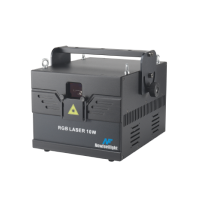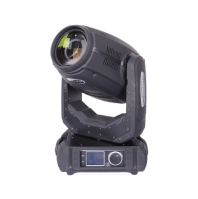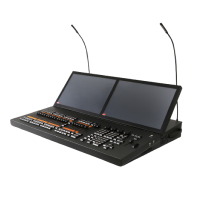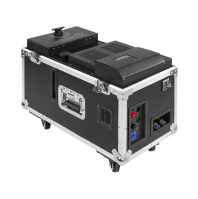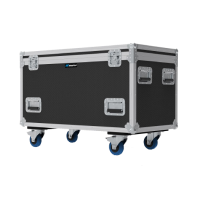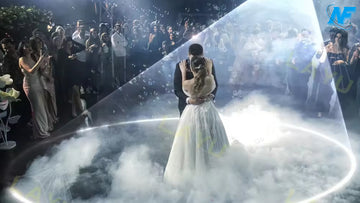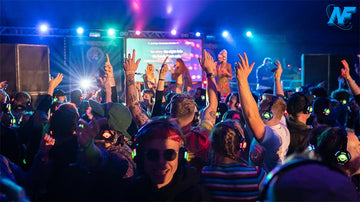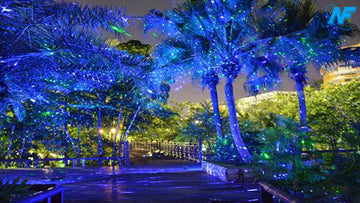Table of Contents
- Stage Lights Position
- DJ equipment stage lights Position
- Key light
- Backlight
Stage Lights Position
Light positioning is the technique of strategically installing various light sources in specific locations to control the direction of light. When the stage lights director wants to highlight certain performance elements, different light positions are used, casting different lights on the stage.
It is important to correctly position the light source according to the type of performance. Follow along with the stage lights guide below to learn about the different methods of stage lights setup and how to choose the correct DJ equipment stage lights for your performance.
DJ equipment stage lights Position
When setting up DJ equipment stage lights, there are several factors to consider. One of the options AVL technicians need to consider is how to position their lights to ensure the best results on stage. In DJ equipment stage lights, there are three main ways to position your lights, which are described below.
1. Key light
Also known as key light, it is usually the first set of lights installed in the DJ equipment stage lights installation process. Front stage lights is the highlight of the main event and is crucial in a DJ equipment stage lights setup. In theory it creates an even light, providing the visibility necessary to enjoy the show. Regardless of the type of show, it usually lights up the stage and the performers or emcee, making them the central focus of the audience. When designing front stage lights, keep the following points in mind:
• Set up above the stage.
• The headlights are angled at 45°, pointing down towards the stage.
• The number of headlights should be commensurate with the size of the stage. It is recommended to use two headlights for each stage area.
• When using multiple sets of headlights, make sure they are evenly distributed.
When it is not possible to mount headlights overhead, light stands, trusses, or other stage rigging structures can be used to secure the headlights. Setting up light stands at either of the front corners of the stage, with the lights angled toward the performers, ensures that the structure does not obstruct the audience's view of the performance.
2. Backlight
Backstage lights provides the necessary contrast to allow performers, presenters, etc. to stand out from the background. From the viewer's perspective, the backlight is what makes the performer stand out, allowing the audience to fully immerse themselves in the experience before them. Backstage lights helps viewers see expressions, costumes and details more clearly, making them feel part of the event. Backstage lights helps define and separate performers from the background, making them more visible and alive on stage. Here are some tips:

The backlight should be set directly above the stage and away from the front lights. Install the backlight so that it is slightly higher than the front light. The backlight is angled towards the stage at a steeper angle than the front light.
Backstage lights can make or break the viewer experience. When the backlight position is not ideal, it will reflect the light directly on the audience, which makes it impossible to enjoy the performance. Reasonable position of the backlight allows the audience to experience more dimensional performances.
3. Three point stage lights
For professional performances, three-point stage lights is the preferred method of DJ equipment stage lights positioning:
• First light 45° left, 45° up
• Second light 45° right, 45° up
• The third light is up 45-60°, directly behind the performer.
In this way, the subject can be properly illuminated from both sides, ensuring an even and balanced light. This also illuminates their facial features by illuminating their eyes (and not from under the chin), ensuring a harmonious look. A third light behind the subject creates a backlight that separates it from the background.

The importance of light position
stage lights is the key to the quality of a show, and picking the right stage lights position is, of course, crucial.
1.Outstanding performance
stage lights positioning has a huge impact on the show itself. The right stage lights placement can enhance the perception of a performance, helping to accentuate or downplay certain features.
When people want to enhance action, project a specific effect, or emphasize a certain angle, DJ equipment stage lights can achieve these goals simply by positioning the light at the appropriate height and angle.
stage lights can also make subjects appear more vivid or sculptural, making people on stage stand out rather than blending into the background.
2.Ensure safety
Proper DJ equipment stage lights allows performers and crew to see what they are doing.
Poor stage lights impairs visibility, makes performances more difficult, puts people at risk of injury, and increases the risk of stage equipment malfunctioning, leading to accidents.
Therefore, always keep safety in mind. Make sure the stage lights is adequate, prioritizing proper stage lights directions to allow adequate visibility of the stage.
3.Audience experience
Installing the right light source in the right place can make a big difference to how the audience experiences the show. The right combination of key lights, fill lights, backlights, and other stage lights tools can ensure that an actor's face is fully and evenly lit. When stage lights is positioned correctly, it can help convey the details of the story and the show becomes more immersive for the audience.

4.Positioning focus
stage lights positioning is critical for theater applications as it directs the audience's attention to a specific focal point at critical moments. stage lights provides visibility and balance, letting viewers know what to pay attention to. stage lights in the right place can also draw the viewer's attention away from certain areas. The combination of accentuation and attenuation is where the value of light positioning lies.
4.Positioning focus
Activities that focus on light placement
Stage lights
Every event needs stage lights, and each type of event will have its own unique stage lights needs. Depending on the production, different stage lights positions will be used to help enhance the performance and entertainment. Below are four shows and events that require strategic stage lights positioning.
1.Drama
stage lights is critical in a theatrical production. The set director often works with the stage lights director to make sure the stage lights crew understands the story and what elements the audience needs to pay attention to or ignore. stage lights can exaggerate certain elements on stage, including costumes, props, and actors' movements. Also, stage lights can downplay certain aspects of the theater, such as overhead rigging and other structures. stage lights in the right place can ensure that viewers are immersed in the story in front of them and not distracted by the venue itself.

2.Concert
Apart from the music itself, one of the main elements that make a concert more interesting is the various stage lights tools and stage lights positions. Typically, concert stage lights directors use a combination of overhead stage lights mounted on trusses, direct spotlights at stage level, and fill lights integrated into the stage itself. Backstage lights can move across the stage, helping to illuminate certain features, or stage lights to the beat of the music. If fog or smoke is used on stage, backstage lights can also enhance the effect, making the light particles sparkle.
3.Sports event
Whether outdoors or indoors, sporting events require sufficient stage lights to satisfy both spectators and players. The stadium stage lights is overhead, pointing towards the field and onto the stands. Depending on site size and ceiling height, there will be multiple levels of stage lights installed at different heights. stage lights at ground level also helps to illuminate stairs and passageways for safety. stage lights effects such as spotlights are also part of the game's entertainment value. Having multiple types of stage lights allows staff to focus on players at different times.
4.Meeting
stage lights is critical to visibility and attendee engagement. Meetings require bright, even light to keep participants focused. Convention centers need to provide sufficient light for the stage area and the entire audience area, and also need to have appropriate sources of emergency stage lights. The stage lights of meeting spaces may require multiple stage lights positions, depending on the size of the area. Dome lights will serve as the main source of light to illuminate the stage, giving speakers plenty of light and visibility. Backstage lights and fill stage lights can also enhance the quality of an event, and it's a good idea to frame this stage lights within the stage or along the perimeter of the venue.
Stage lights Positioning Method
A stage lights director needs to consider a variety of factors when choosing the best type and location of lights for a show. From the size and layout of the venue to whether the event is held indoors or outdoors, there are many variables that determine how DJ equipment stage lights is installed and positioned.

Indoor/Outdoor: Where and how stage lights is placed will vary depending on whether the venue is indoors or outdoors. Indoor events often have more elevated structures that allow different lights to be installed at different heights. In outdoor venues, stage lights directors need to place lights strategically and protect them from the outside world.
Site size and layout: Small sites do not need too many light sources, and the stage lights in front is basically enough. Larger venues and venues with unique layouts will require a more comprehensive stage lights system, and the design of light positions will become more complicated.
The tone of the show: High-energy concerts and sports shows demand bright, dynamic stage lights. Dramatic performances need to control the intensity of the stage lights and focus on the actors at a specific time.
Number of actors: The number of actors will determine the number and placement of lights needed. If the number of people is small, it may be necessary to provide more stage lights in concentrated areas. On the contrary, wider and more uniform stage lights is required.
Audience Interaction: It is also important to consider whether those on stage must be able to see the audience. stage lights directly onto the stage can prevent performers from seeing the audience. Balanced overhead stage lights is better when the audience is an important part of the event.
8stage lights plays a key role in the quality and entertainment value of many types of performances. Knowing how to position lights effectively can make a huge difference in the audience's level of appreciation. With the right approach to stage lights positioning, certain props, scenes or stage elements can be enhanced to create an immersive experience.


